Learning Microsoft Access 2003
by Greg Bowden (298 pages)
The Learning Microsoft Access 2003 tutorials provide database lessons for beginners and advanced users.
 |
Module 1 introduces the Access basics including starting a database, the use of tables, queries, forms and reports with clear easy to follow examples. |
- Chapters and Sample Pages
- Chapter Descriptions
Access 2003 Basics
The sample podcasts provide the first few minutes of the prodcast and they are the QuickTime Player versions.
Contents (Modules 1 and 2) |
View pages (81k) |
Chapter 1: Introduction to Microsoft Access (16 pages) |
View sample podcast (1.9 Mb) |
Chapter 2: Processing Data (15 pages) |
|
Chapter 3: Introduction to Queries (20 pages) |
View sample pages 2. b) (273k) |
Chapter 4: Creating Data Entry Forms (38 pages) |
|
Chapter 5: Reporting From Databases (24 pages) |
View sample podcast (2.b)(2.1 Mb) |
Chapter 6: Creating User-Friendly Databases (21 pages) |
View sample pages b)(236k) |
Chapter 7: Reports That Total Items (20 pages) |
|
Access 2003 Advanced Exercises
Chapter 8: Using Macros (18 pages) |
|
Chapter 9: Relational Database Features (18 pages) |
View sample pages b)(243k) |
Chapter 10: Creating a Business Invoice System (45 pages) |
View sample pages43k )(350k) |
Chapter 11: Enhancing the Business Invoice System (31 pages) |
|
Chapter 12: Useful Features (18 pages) |
|
The tutorials can be used onscreen next to the software package, from a tablet or printed. Assignments are provided at the end of each chapter and the multi-user version provides projects at the end of each module.
Support files that provide all the images and data required to complete the activities are included with the product.
Module 1 Chapter Descriptions
Chapter 1: Introduction to Microsoft Access
Demonstrates how to set up a simple table, add data to the table, edit data, delete records and print the data. The following is an example of a table produced:
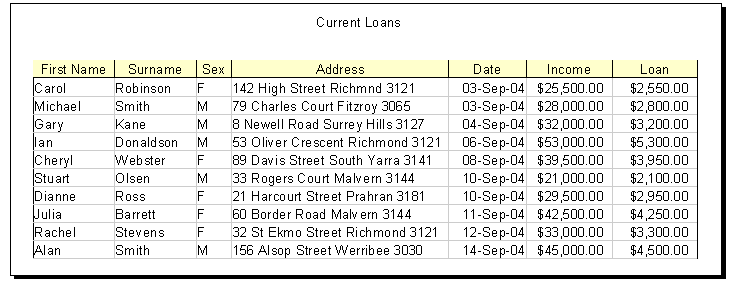
Chapter
2: Processing Data
This chapter provides activities on how to sort data into alphabetical, numerical or chronological order, how to filter information and how to search for information. For example, a table showing just the females sorted by date:

Chapter 3: Introduction to Queries
This chapter provides activities
on how to set up a query, how do calculations on the data, how
to sort and filter the query, how to set up table relationships,
how to use the query wizard and how to use interactive queries.
For example, the following diagram shows a total pay calculation
added to a database and wages over $600 displayed.
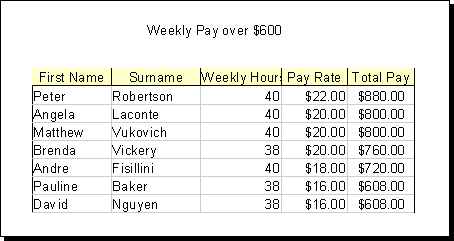
Chapter 4: Creating Data Entry Forms
This chapter provides activities
on how to create Forms. It includes how to insert fields, adjust
field widths and positions, how to align fields and labels, how
to change fields text and fill colours, how to insert graphics,
add pop-up or menu lists and how to set the field entry order
to produce forms similar to.
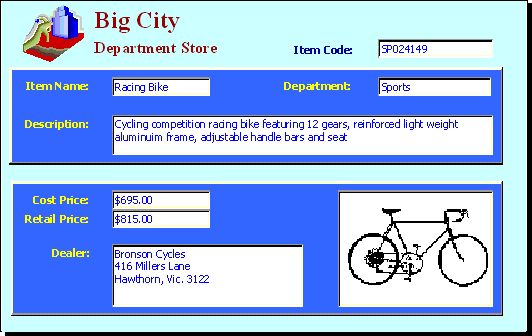
Chapter
5: Reporting From Databases
This chapter provides activities on how to create Reports from databases. It includes how to layout a report, add calculations, how to format the report, how to add headers and footers, page numbers and how to use the report wizard. An example of a reported created is:

Chapter 6: Creating User-Friendly Databases
This chapter demonstrates how to create user-friendly databases that links tables, queries, forms and reports together. It involves adding buttons, creating a switchboard form and setting passwords to the database. The following switchboard is created:
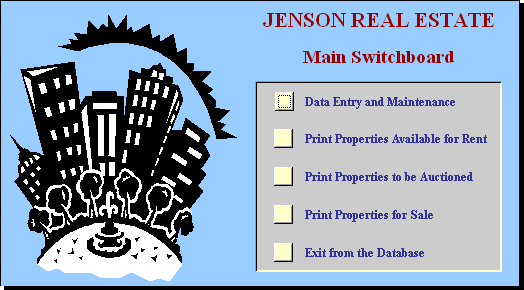
Chapter 7: Reports That Total Items
This chapter provides activities
that show the user how to include sub-totals and grand totals
in reports. It covers how to set a group, add controls to the
group, how to adjust the group footer and how the adjust the
report footer to create reports such as:
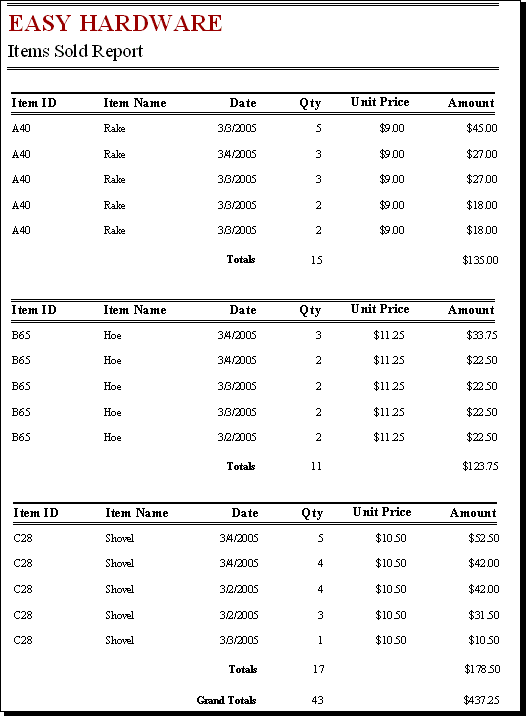
Module 2 Chapter Descriptions
Chapter
8: Using Macros
This chapter provides activities on how to create macros. It covers creating macros, assigning buttons to macros, editing macros, macro groups, setting an autoexec button and printing macro definitions.
Chapter 9: Applying Rational Database Features
This chapter provides activities
on how to create relational database systems. It covers defining
relationships, setting match fields, setting a sub-form frame,
allowing for cascade deletes and the advantages of relational
database systems. The following form is created displaying data
from two separate databases:
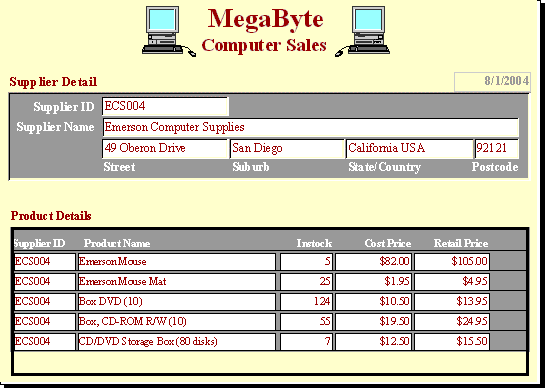
Chapter 10: Creating a Business Invoice System
This chapter provides activities that apply the relational database concepts developed on the previous chapter to create a complete business invoice system. It covers creating the relationships, preparing the invoice, completing calculations, inserting a company logo and using the invoice. The following invoice is created:
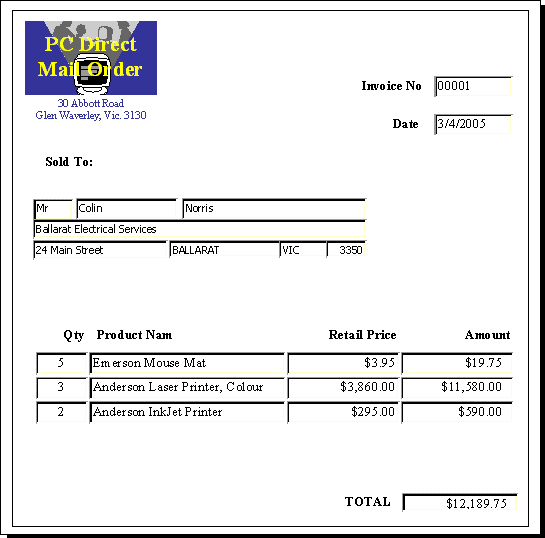
Chapter
11: Enhancing the Business Invoice System
This chapter demonstrates how to enhance the invoice created in the previous chapter. This includes creating reports, adding mailing labels, adding command buttons, creating a switchboard form and using the invoice system. The following summary report is created from the invoice data.

Chapter
12: Useful Features
This chapter demonstrates some of the useful tools that Microsoft Access offers. For example, using Help features, creating Form Tabs, the Calendar Control, checking for Duplicate Records, Document Properties and Database Wizards.
| Home | Products | iPad | Downloads | Testimonials | Ordering | Contact Us |